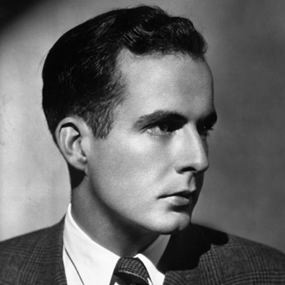We tend to associate the word overture with opera, which is hardly surprising because the two have existed side by side for the last four hundred years.
By the end of the eighteenth century, popular opera overtures were often played as separate items in the concert hall. Not long afterwards, the so-called concert overture started to appear. It was intended not as an introduction to an opera, but as a stand-alone piece and often played at the beginning of a concert. The word overture was adopted probably because no one could think of a more appropriate name.
Many concert overtures were based on literary themes and although Weber wrote a couple of them, it’s generally assumed that the first genuine concert overture was A Midsummer Night’s Dream (1826) by the seventeen-year-old Felix Mendelssohn, inspired of course by Shakespeare’s play of the same name. Mendelssohn went on to write several other notable concert overtures such as Calm Sea and Prosperous Voyage (1828) and The Hebrides (1830), perhaps better known, though less elegantly as Fingal’s Cave.
 Samuel Barber as a young man.
Samuel Barber as a young man.
By the middle of the nineteenth century, the concert overture was firmly established and remained a favourite among composers for generations. Rimsky-Korsakov’s Russian Easter Festival Overture springs to mind, as does Tchaikovsky’s old pot-boiler, the 1812 Overture.
The twentieth century saw the appearance of countless others including Dmitri Shostakovich’s Festive Overture and Walton’s Portsmouth Point. Incidentally, Malcolm Arnold wrote A Grand, Grand Overture in 1956 which was a spoof on the heroic concert overtures of the late nineteenth century. It was scored for an enormous orchestra with organ, three Hoover vacuum cleaners, an electric floor polisher and four rifles. It is a work of hilarious vulgarity which of course, is exactly what it’s intended to be.
Hector Berlioz (1803-1869): Overture, Le Corsair Op. 21. Orchestre de Paris, cond. Paavo Jarvi (Duration: 8:09; Video: 720p HD)
You can find some of this composer’s most colourful music in his concert overtures. He wrote about ten of them between 1826 and 1851 and they mostly have connections to literary themes or historic figures. Berlioz (BEHR-lee-ohz) is considered by many music historians and composers as the “father of modern orchestration” and indeed his writing for orchestra is invariably striking and colourful. In terms of orchestration, Berlioz boldly went where no composer had gone before.
When he was visiting Rome in 1831, Berlioz discovered that his fiancée had left him for someone else. After trying to drown himself in the Mediterranean (as one does), he moved to Nice and spent time near a ruined coastal tower reading romantic novels of pirates or corsairs as they were sometimes known. He returned to Nice for a holiday thirteen years later, evidently on doctors’ orders and re-worked some earlier musical sketches into the Le Corsair overture which he originally called La Tour de Nice (“The Tower of Nice”).
It was first performed in Paris in 1845 but was later revised and renamed though it has no direct connection with Byron’s The Corsair, even though Berlioz had read the book. It’s one of the composer’s most popular concert pieces but surprisingly it wasn’t played often during his lifetime.
This is a thrilling performance conducted by the distinguished Estonian conductor, Paavo Järvi though I noticed that from certain angles, he bears an unsettling resemblance to Vladimir Putin.
Samuel Barber (1910-1981): Overture to “The School for Scandal”. Metropolitan Symphony Orchestra, cond. William Schrickel (Duration: 09:11; Video: 720p HD)
Barber is perhaps best-known for his Adagio for Strings which was actually a string orchestra arrangement of the second movement of his String Quartet. The title of the overture refers to the comedy The School for Scandal by Richard Brinsley Sheridan, the Irish playwright, poet and long-term owner of London’s Theatre Royal in Drury Lane. It’s hard to believe, when you listen to the skillful orchestration that this was the composer’s first work for full orchestra. Barber was only twenty-one at the time and a student at the Curtis Institute of Music in Philadelphia but the overture, written as a graduation thesis, went a long way to establish the composer’s international reputation.
Barber was born into an educated, privileged and distinguished American family in West Chester, Pennsylvania. He started learning piano and cello at the age of six and as a child showed prodigious musical talent. At the age of nine, evidently in a state of agitation he wrote to his mother, “I have written to tell you my worrying secret. Now don’t cry when you read it because it is neither yours nor my fault. To begin with I was not meant to be an athlete. I was meant to be a composer, and will be I’m sure. I’ll ask you one more thing. Please don’t ask me to try to forget this unpleasant thing and go play football.”




